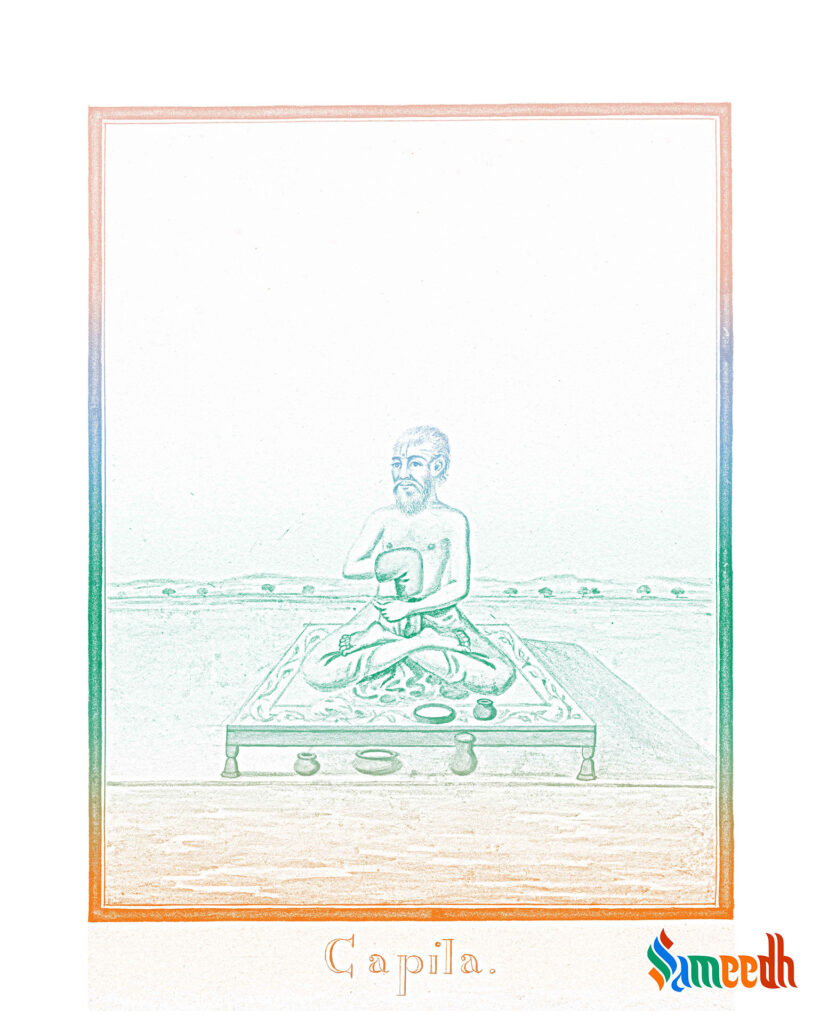Significance, life journey and teachings of the great Hindu sage Kapil

Image Source: The British Museum
Kapil was one of the well known vedic sages in Hinduism with his yogic abilities and powers. He was born to Kardama and Devhuti as their tenth son, the eight daughter was saint Arundhati. Kardama had received a boon from a lord Narayan through which he himself can be born again as his own son and the son was Kapil. Kardama repent for this severely by restoring to the depth of forest after renouncing everything he owned and immersing himself in the study of ancient vedic texts. HIs first nine children, his daughters, were born filled with wisdom and went on marrying great sages in their lives. His tenth son, Kapil, too was born to be surrounded with heavy knowledge and vast wisdom.
The sage
Kapil’s presence has been noted in the 6th century BC era, but certain scriptures also claim it to be the 7th century BC. He is widely known for his Yoga teachings, it was he who laid the foundation to bhakti yoga, the union of body and mind through devotion and meditation.
Kapil is known to be a reincarnation of lord Vishnu, god of preservation, himself. This avatar of Vishnu is believed to have been sent on Earth to restore balance and order through spiritual, meditative teachings, knowledge, wisdom and faith.
Although his mentions dominate the ancient Hindu texts, even Buddhism is known to follow his teachings and principles. As legend has it, the followers or students of Kapil had constructed the city of Kapilvastu, which is believed to be the birthplace of Buddha. The great sage even had multiple resemblances with the Buddha in terms of ideologies and preachings. He too used Meditation as a tool to reach a higher sense of spirituality by eradicating pain and suffering from the mental boundaries created by people. He makes appearances in the Hindu literature too unlike a lot of sages, making him more than just a mythical legend.
Samkhya Philosophy
Samkhya or Sankhya translates to calculation, counting, reasoning, rationality, deliberation etc. It is widely observed as the number system in Hinduism. This school of philosophy focuses on the duality of human emotions and experience through two unique factors of Purusha and Prakriti, consciousness and cognition respectively. It further expands to souls, spirits with the concept of atma and non atma or an entity. He elaborated how the energies transformed in various ways, be it spirits or primary, ancient matter. The Prakriti or matter is deemed to be inactive and influenced by the three Gunas; Sattva, Rajas and Tamas. It essentially studies the relationship between energies and matter, greatly contributing to understanding of the environment and how to channelise energy optimally. Energy that is still or unmanifested is Prakriti, but when combined with Purusha, it manifests and constructs the physical world.
Death of Sagar Putras
Sagar was the king of a solar dynasty, worshippers of the sun. His children were Asamanjasa from his wife Kesini and other sixty thousand sons from another wife Sumati. King Sagar was once performing a yagna or ritual at the junction of Indian rivers Sindhu and Ganga, and needed a sacrificial horse to officiate the ceremony. His grandson Ansuman, son of Asamanjasa was leading the sacrificial animal when lord Indra, Hindu god of lightning stole the horse and hid it in hell, the burning nether land of the world. Sagar instructed his sons to get the horse by any means even if they had to dig out the entire world. After immense digging, they finally found the horse beside a Kapil meditating, The chaos distured kapil’s peace and when he opened his eyes, his wrath turned all of Sagar’s sons into mere ashes